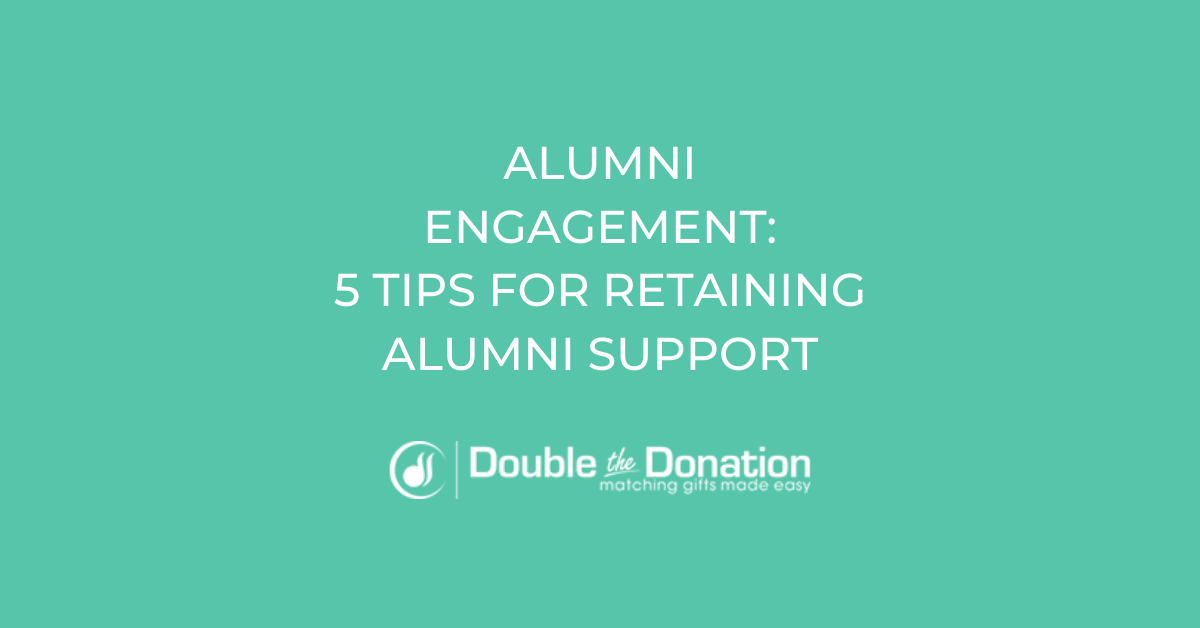min read

Engaging your supporters is a no-brainer for nonprofit organizations. Of course, you need to keep them engaged with your organization in order to retain donors.
But every nonprofit has a slightly different strategy for how to keep this engagement up-to-date and successful. The best place to start: your nonprofit’s website.
We’ve compiled 6 effective tips to include in your engagement strategy to drive donors through your online resources. To drive engagement, your organization should:
- Create a website that is easy to navigate.
- Customize your donation page.
- Keep a comprehensive calendar.
- Create an omni-channel online approach.
- Build a strong visual identity.
- Include eCommerce opportunities.
Keep an eye on engagement and fundraising trends year after year to maintain an updated version of your engagement strategy. But remember, the following tips will never go out of style. Let’s get started!

1. Create a Website That is Easy to Navigate
Where is the first place your donors and supporters will look to find updated information about your organization? That’s right, your website!
Maintaining a website that is well-designed and easy to navigate enables your supporters to search for and find all the necessary information about your organization before they donate. The height of a person’s engagement with your organization occurs when they make a donation, so making it easy to give is key to heightened engagement rates.
Make sure you use a content management system (CMS) that will be easy for your organization to use to keep your website up-to-date, and with templates designed for nonprofits like yours.
Some important CMS components to look for include:
- Customizable templates. Templates are great tools to build your website, but be sure you can still add character to your website. The template you choose should be customizable so that you can change images, colors, modules, and layout to best fit the needs and brand of your organization.
- Live site editing. Live site editing enables your organization to edit features on your site as they would appear on the live page. This helps ensure your back-end edits appear on the front-end exactly as you wish.
- Adjustable user permissions. Not everyone on your team needs the same permissions to work on your site. Adjustable user permissions as a part of your CMS enable you to ensure that only the necessary members of your team have direct editing abilities on your site.

Choosing the right CMS is a big step to creating a navigable website that is easy for your supporters to use. Start researching CMS platforms that offer the above features. To continue your research, read about more Morweb’s CMS design tips.

2. Customize Your Donation Page
As stated before, the peak engagement for your donors is when they donate to your organization. Therefore, your donation page is the last line of engagement before securing that important gift.
Make sure your donation page has everything your supporters need to be informed (without overcrowding the page).
Be sure your donation page summarizes the story of your organization. This gives you the opportunity to quickly give supporters the background of what cause they will be supporting through their donation. Choose a CMS that supports customizable donation tools.
Provide necessary story-oriented information on your donation page as an enticing piece of the engagement puzzle. These elements include
- A character. For general fundraising efforts, your protagonist character will likely be your organization. Explain how this character is making a difference. Your mission statement is a great place to start.
- The setting. Tell your donor where you’re making the difference. Do you work abroad? In their hometown? The setting connects the character and mission to the donor. Maybe they like the idea of helping a third-world country or contributing to make their own community a better place.
- A problem. This is where you use pathos to try to invoke sympathy in your reader. Explain what problem their donation will help your organization fund a solution for.
- A solution. Explain how you will use the donations given to your organization to solve the issue at hand. This shows the reader that their money is going to good use.

Customization of your donation page with storytelling techniques can push your reader from supporter to donor. This automatically strengthens their engagement with your organization and connects them more intimately with your cause. Check out Salsa’s guide to donation page design for more information about how to maximize this engagement opportunity.

3. Keep a Comprehensive Calendar
Make sure your website acts as an engagement resource for your supporters so they know about the upcoming activities that your nonprofit is organizing.
Maintain a comprehensive calendar in an accessible location on your website so that it is easily located. You may consider navigating directly to the calendar from the navigation menu on the homepage.
Some activities to keep on this calendar include:
- Upcoming fundraising events.
- Fundraising campaign dates.
- Volunteer opportunities.
- Appreciation events.
- Member meetings.
- Conferences.

Calendar functions are an important add-on to to look for in your choice of CMS. The proper online calendar tool can make the biggest difference in the creation of this comprehensive calendar. For instance, some calendars may have color-coding capabilities to help organize your events for improved readability and convenience for your donors.
In addition to keeping your donors informed about engagement opportunities through your website, you can also promote key giving times using calendar features. For example, use your calendar as a part of your end of the year appeal strategy to remind people to give in order to receive their tax deductions.

4. Create an Omni-Channel Online Approach
Many nonprofits do a great job of keeping different online engagement channels open for donors. You probably strive to post regularly on social media and send regular email newsletters. However, as they stand, each of these channels act as a singular point of contact for your supporters.
What if you could connect them? Creating an omni-channel (as opposed to a multi-channel) experience creates a single engagement path for your supporters to follow.
Picture the difference between omni- and multi-channel engagements like this:
- Multi-channel: Suppose a donor visits your website to read about your mission. Once they’ve read what they want to read, they exit the browser. The next day, they may run across a Facebook post you’ve written, but scroll right past. Everything is a separate engagement effort through a multichannel system.
- Omni-channel: Suppose the same donor visits your website to read about your mission. Once they’ve read it, they see a button that gives them the opportunity to stay updated with your work. They click it and are led to an email signup page. That donor’s first email from your organization has social media buttons integrated into the template leading to your Facebook page, which they follow and scroll through all your latest posts.

Omnichannel engagement opportunities lead supporters from one engagement opportunity to the next in a streamlined fashion. Starting with your website, adding social media integrations and form builders for emails will help you keep in touch with your donors easily and lead them to even more engagement opportunities.
The next step to create an omni-channel, streamlined experience for your donors is to include links from your other channels back to your website. For example, include your comprehensive calendar in your next email newsletter, for people to click on to lead back to your site.

5. Build a Strong Visual Identity
We’ve all heard the saying: “A picture is worth a thousand words.” This is especially true for your website. A strong visual identity on your website can help take your donors’ experiences to the next level.
High quality images tend to capture our attention better than simple text on paper.
Why is this? We have more receptors in our brains simultaneously reacting to the various shapes, elements, and colors of images. Plus, images are wired to our brains’ emotional responses. Therefore, the inclusion of high-quality images to your content can help get the attention of your viewers and help them better remember the content.
Your visual identity begins with your website. This is likely where you will define your brand. It starts with your logo, colors, and images to trigger the necessary functions of your donors’ brains.
These visual elements will help guide your visitors’ first impression of your organization as they react to your brand. It will also help them remember your organization in the future.
Visual identity is an especially effective tool for:
- Creating visual interest for your donors.
- Telling the story of the organization through images.
- Promoting different activities by creating a tone with imagery.

When you’re getting started establishing your visual identity, explore the other most effective nonprofit websites to see what triggers your emotional and visual responses. Take note of these elements to incorporate into your own site.

6. Include eCommerce Opportunities
One of the methods of engagement nonprofits often forget about is eCommerce. You’ve probably offered the sale of t-shirts or other customized merchandise to donors at fundraising events or other activities. Moving these sales online through your website engages donors and promotes your organization.
Many nonprofit CMS software offers features with eCommerce capabilities. Even if it is not directly included with a website template, check to make sure you can include an add-on to make this opportunity available.
eCommerce effectively engages donors because:
- The purchasing process becomes a part of your omni-channel online experience.
- The purchased product makes the donor feel more involved with your organization.
- Sporting merchandise keeps the organization at the forefront of your donor’s mind and encourages those around them to check out the organization too.

Order custom merchandise in bulk to include on the website as a part of this eCommerce opportunity for your donors. Include a descriptive image of each item on the site so your donors know exactly what they are viewing from your online store.
Your online resources offer advanced engagement opportunities for your donors to take part in. Drive donor engagement with the 6 tips in this post. No matter how online trends come and go, these web design tips will consistently yield an effective engagement strategy.







